The Doctor: First Doctor (William Hartnell)
The Companions: Susan (Carole Ann Ford), Barbara (Jacqueline Hill), Ian (William Russell)
The plot: The TARDIS arrives on board a spaceship in orbit around a planet called the Sense-Sphere where the local Sensorites are menacing the human crew
Written By: Peter R. Newman
First aired: 20/06/1964-01/08/1964
Continuity: Timelords have telepathic abilities
The future of humanity is as an advanced space-faring civilisation
The Doctor’s home planet has an orange sky and the leaves are silver
Season 1, Episode 31-36 review
It all started out as a mild curiosity in a junkyard, and now it’s turned out to be quite a, quite a great spirit of adventure, don’t you think?
The Doctor, The Sensorites
Doctor Who’s first season approaches its end with a cerebral space adventure that explores the peaceful but completely alien civilisation of the Sensorites and its clash with mercurial and imperialist future humans. It’s a fitting story for a season that explores various clashes of civilisations (although I suspect its thematic cohesion is more luck than planning, considering how tumultuous the first season was generally).
While The Sensorites has not had long-term impact as a story, it is quite underrated. Parts of it resonate particularly in a Covid-19 world. It has an episode devoted to foundational epidemiology with a literal water pump. Not to mention a heavy dose of self-interested leaders who don’t want an evidence-based approach to an epidemic.
While Barbara is benched for most of the story, it is Susan’s time to step forward as a character. And so The Sensorites holds a place in Doctor Who history for another reason – it was The One Where Susan Was Tolerable.

The Sensorites begins with the TARDIS landing on a drifting spaceship in the 28th century. The crew – a Captain Maitland and Carol Richmond – appear to be dead but instead revive and tell them they’re in orbit around a planet called the Sense-Sphere. The inhabitants, the Sensorites, refuse to let them leave orbit and use a combination of telepathy and sabotage to keep them there. The crew are essentially prisoners on their own ship: kept alive but restrained, never able to leave.
The Doctor, in a decidedly first generation move, decides it’s best just to leave things as they are and fly away. This results in a truly delightful exchange where the Doctor declares that “there’s not an ounce of curiosity” in him and that he “learned not to meddle in other people’s affairs years ago”. Ian and Barbara can only laugh at this absurdity.
The TARDIS crew prepare to leave but it’s already too late. A mysterious figure has removed the TARDIS opening mechanism and our crew can’t get in. They are also prisoners of the Sensorites.
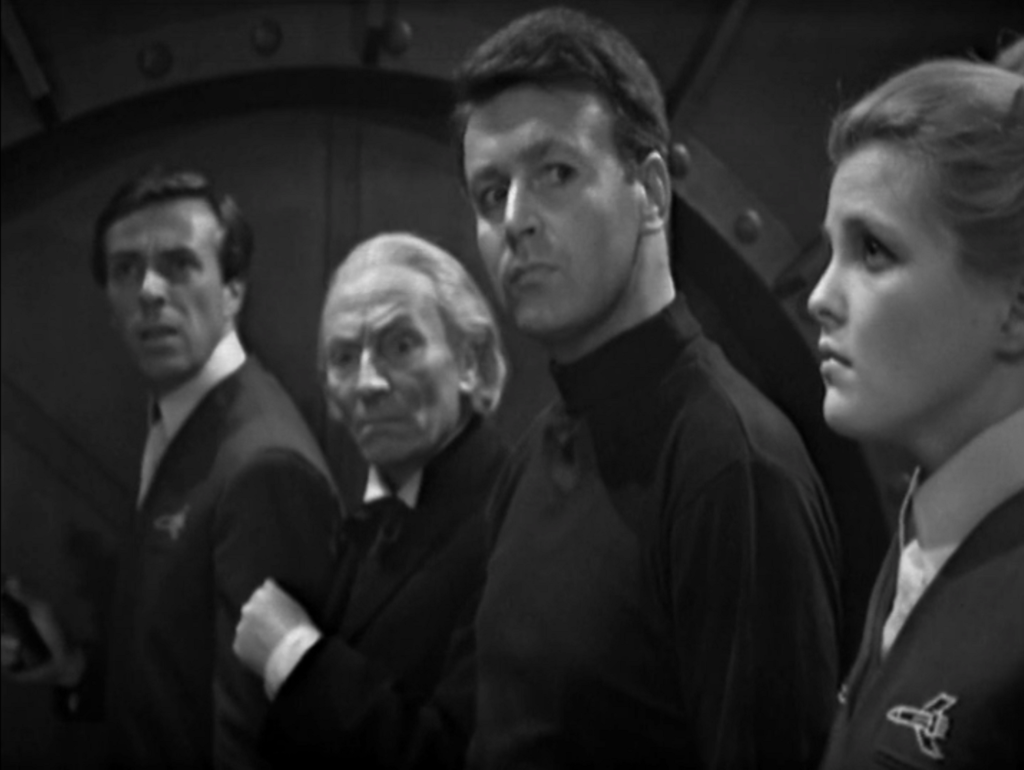
The Sensorites are menacing figures throughout these first two episodes. They lurk just out of sight; sabotaging equipment and appearing sinisterly at portholes. Their mental powers have driven fellow crewmember and mineralogist, John, mad. He prowls through the decks attacking his friends and rambling nonsense.
As an apparent enemy, the Sensorites are completely alien: their appearance frightening and their motives unfathomable. It is a fear of the different that Newman cleverly ratchets up before revealing to us that the Sensorites themselves are acting merely in self-defense. We are as alien, as terrifying and as unknowable to them as they are to us.

The Doctor and the rest of his companions seem somewhat immune to the Sensorite’s mental powers. The other humans are either rendered helpless by them or, in the case of John, driven mad by the voices in his head. It is a state induced by fear and the Sensorites at one point pretend they are going to crash the ship to induce the appropriate emotional state for their mental powers to work.
Nonetheless, Susan and Barbara manage to get through to the mineralogist, John, enough to let him resist the Sensorites somewhat. It gives Susan an idea based on her experience with telepathy and she and Barbara manage to overpower them mentally by focusing on the phrase, “We defy you”. It works to break the link between them and John but causes Susan to collapse as the voices of the Sensorites crowd into her mind .
While John is now finally sleeping normally, he manages to waken enough to talk of “the dreams of avarice”. It leads Ian to speculate that John may have discovered something about the Sense-Sphere that started all this. This leads to a brief but charming scene where we’re reminded that Susan was Ian’s star science pupil back when she was the Unearthly Child and not a shrieking dimwit.
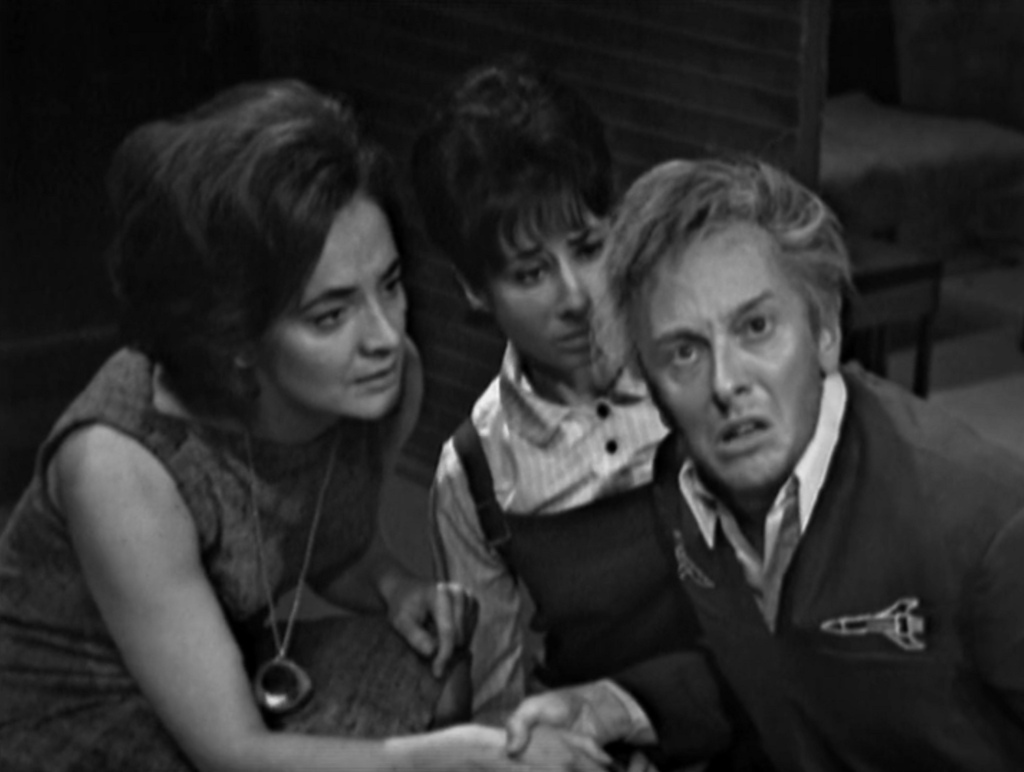
After reviewing John’s research notes, the Doctor realises that the Sense-Sphere is rich in a precious metal called molybdenum. John’s discovery of molybdenum caused such excitement that it opened his mind to the Sensorites who knew what he had discovered – something they wanted kept a secret.
To keep this knowledge from getting back to Earth, the Sensorites stopped them from leaving and tried to wipe the knowledge from John’s mind, destroying his psyche in the process. But they did not physically harm them, something the Doctor and Barbara in particular have noticed.
The Sensorites redouble their mental attacks on the crew upon their discovery of the precious metal but, our protoganists are realising, don’t make any other aggressive moves. Ian, however, is in full macho action man mode and seems intent on fighting them physically. It’s a philosophical argument that’s shaping up to be the greatest point of contention between him and the Doctor. The latter wants to talk first, Ian wants to hit.
Ian’s instinctive violent response is most notable in a scene where he and Barbara try to hunt down the two Sensorites on board that are telepathically attacking the crew. The two aliens do nothing but walk towards them slowly but Ian grabs a hammer and threatens them with it.
It’s this image – the conflict between the mental and the physical – that encapsulates the fundamental cultural clash between the two. The humans feel threatened by the aliens’ mental powers. The aliens feel threatened by the humans’ closed minds and impulsive recourse to physical violence.
BARBARA: Ian, no!
The Sensorites
IAN: Why not? How else can I keep these creatures off?
BARBARA: Well, do you need to keep them off? Have they actually attacked you?
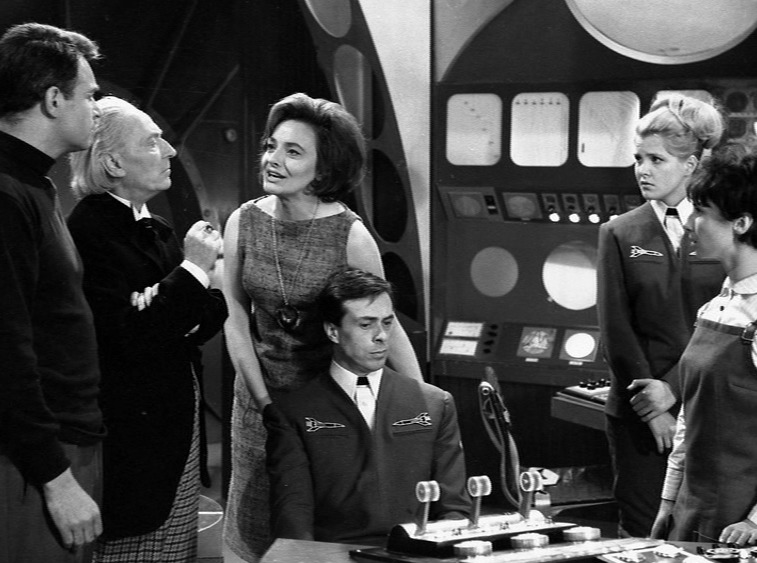
Faced with humans they can’t mentally control, the Sensorites reach out telepathically to Susan and offer to relocate them to the Sense-Sphere. They’ll still be prisoners, however, and it’s a deal the Doctor soundly refuses.
This provides a conundrum for the Sensorites who are physically passive and quite peaceful. They want to relocate their prisoners but do not want to harm them. If they refuse to leave the ship, the Sensorites need to figure out how to make them comply without physically forcing them.
The Sensorites trust Susan because of her telepathy: it’s a trait that makes her more familiar in a society where minds are open and physical aggression is rare. They ask for her agreement to be a hostage to ensure the safety of their planet. Susan agrees, which leads the other to try to stop her from being taken.
They are not carrying any weapons, yet I am frightened of them.
Unnamed Sensorites, The Sensorites
The Sensorites finally draw a weapon – albeit to stun them – and Ian dims the lights, which the Doctor had theorised would render them virtually blind (although one wonders then how they managed to navigate to the ship through space without a suit of any kind) (just ignoring how improbable it is that oxygen-breathing planet-bound animals could withstand a vacuum in the first place).
The Doctor then attempts to renegotiate from a position of mutual strength – the Sensorites have the TARDIS lock and the humans can physically overpower them at any time. Once again, the aliens regroup to discuss their options.
Intruders from other planets always say they wish to talk, but all they mean to do is destroy.
Unnamed Sensorites, The Sensorites
Following the altercation, the Doctor and Susan have an argument about her ability to make her own decisions. He’s clearly struggling once again with not being able to dictate every aspect of her life now that she’s growing up. It’s a reprise of the issues he had earlier in the season when the presence of Ian and Barbara disrupted his and Susan’s dynamic and it possibly explains Susan’s textual childishness. In a misguided attempt to protect her, the Doctor has deliberately kept her infantilised.
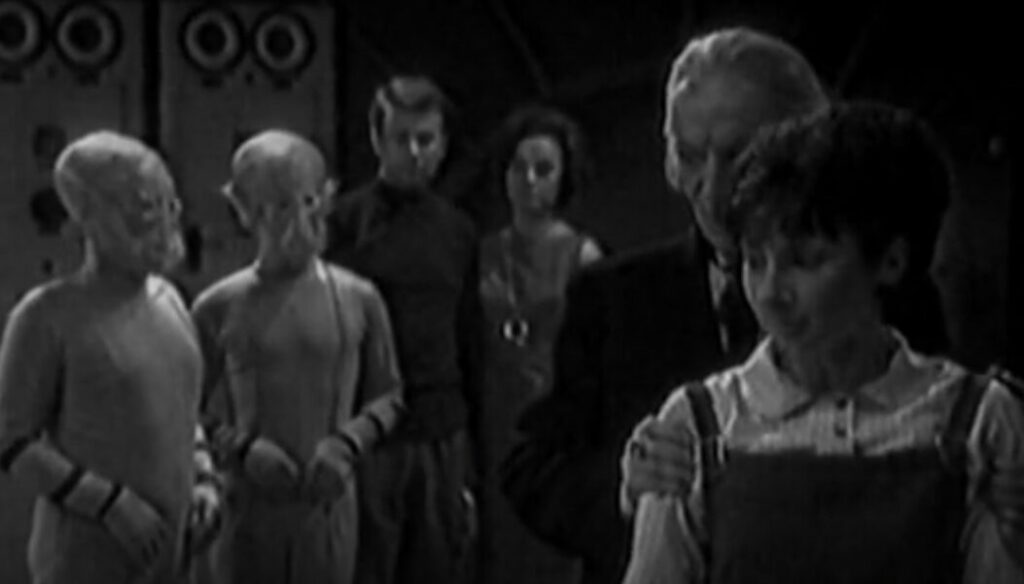
While it makes sense, it hasn’t made it any less frustrating to watch. And if Carole Anne Ford wasn’t already tired of playing this one-note character, it may have made for an interesting backdrop to revelations about their past and their people. Whatever these were originally intended to be.
The Sensorites finally agree to a meeting with their First Elder. While this is being arranged, Barbara asks them if there is anything they can do for John, who has suffered significant psychic damage. The Sensorites say he can be cured. So the two sides come to an agreement: Barbara and Maitland will remain on the ship with a Sensorite, while the other humans go down to the Sense-Sphere to negotiate their freedom with the First Elder.
The Sensorites finally explain why they panicked when John found the molybdenum. Five years before, humans had visited the Sense-Sphere and been greeted as friends despite their minds being closed. However, they’d found out about the mineral wealth of the planet and had fought over it, eventually taking off in their haste to inform their home planet of the riches.
The ship had exploded in the atmosphere but, since their passing, Sensorites had begun dying of a mysterious illness in greater and greater numbers. It has shades of imperial plundering, which, we know by now, is somewhat Barbara’s forte and she speculates it could a simple illness the local population simply doesn’t have an immunity to.
The Doctor realises that the Sensorites are hoping he can solve the riddle of the affliction and he is more than happy to oblige if it means he can get back into his TARDIS.
On the planet’s surface, a group of identical grey bearded Sensorites are having an argument about the decision to meet with the humans. Newman has clearly developed a complex and sophisticated social structure for these aliens, one that has developed in a world of verbal communication but with a natural telepathy augmented by technology.
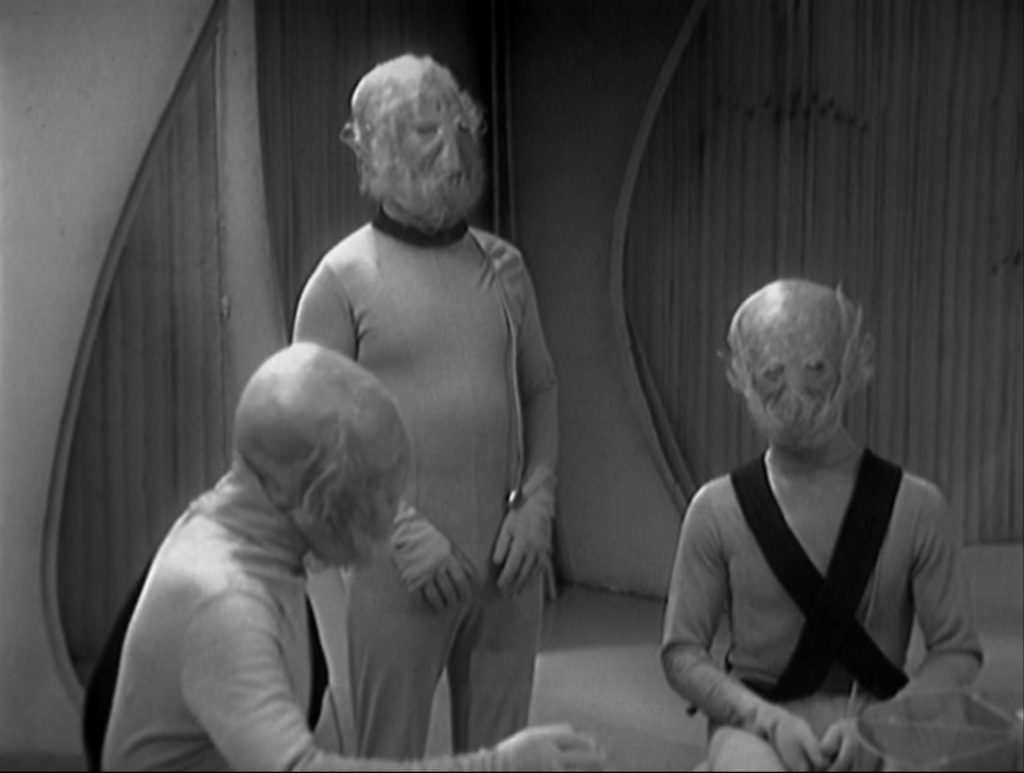
And yet this back half of the series feels like watching a Korean Sageuk, where you spend more time wondering who identical bearded men are than you do following the plot. In the Sense-Sphere, all are nearly identical so position and status are designated by symbols. They have a strict caste system – elder, warrior, worker – and claim to a happy and harmonious society (although one starts to wonder why such a society would need a warrior caste at all). While Newman has put a lot of thought into the Sensorites’ social system, their portrayal is in some conflict with the extremely alien beings we saw in the first two episodes.
The First Elder – designated by a double sash – thinks inviting the strangers in is worth the risk if it means they can identify and cure the mysterious plague. He shows himself a leader and a natural diplomat, willing to extend the hand of friendship even with the history between the two peoples. The Second Elder – single sash – defers to the First Elder’s wisdom and position but is nonetheless concerned that humans, whom he calls ‘loud and ugly things’ cannot be trusted. The City Administrator – neck cuff – is an obsequious Yes Man to the First Elder’s face but disloyal and manipulative behind his back. He tells the Second Elder he has aimed a disintegrator at the room where the humans are to meet to protect their leader. But his true motives are soon revealed – he intends on making a pre-emptive strike.
Meanwhile, John, whose mind is still open and has started saying random comments about people being good or evil, declares the “evil mind is near”. It’s clear he means the City Administrator who is busy colluding with an engineer about killing the strangers with the disintegration beam. Unfortunately, engineers don’t seem to have any sash designation at all so this is going to get confusing. Thankfully scientists seem to have an insignia on their chests and warriors bands around their arms.
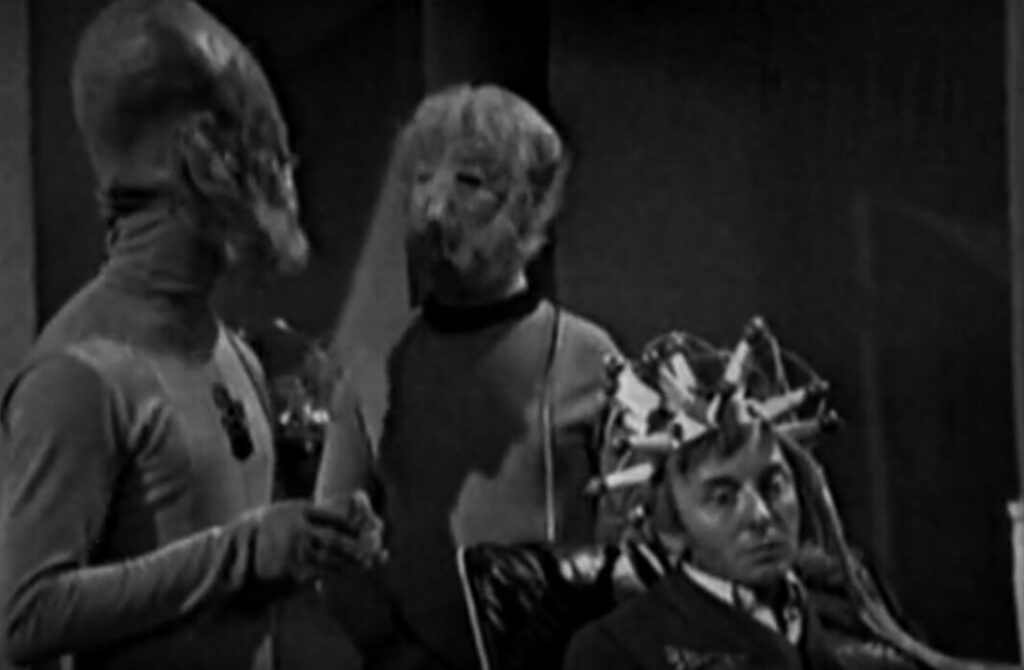
As John is taken to a lab to be cured (accompanied by Carol, with whom he was romantically involved before all this happened) and the Doctor, Susan and Ian prepare to negotiate with the First Elder, the Second Elder bursts into the disintegrator control room and demands they stop because the humans are civilised and reasonable. The City Administrator makes his prejudices clear: they are dangerous because they are humans and therefore need to be destroyed.
The Administrator then moves to the lab where he suggests they kill John rather than curing him. It’s twice in one day that he (there is no evidence the Sensorites have sexes, however they are all clearly played by human men so I’m inclined to refer to them using the masculine pronoun) has shown a disregard for the First Elder’s orders and the Second Elder expresses concern. He takes the firing key so the disintegrator cannot be used. However, the Engineer pledges his loyalty to the City Administrator, agreeing with him that their leadership is weak and the humans untrustworthy.
In the meeting room, the First Elder is explaining that the Sensorites were already wary about humans when John’s mind opened and they saw images of imperial expansion: fleets of ships being summoned to their planet to gut it of its natural resources. The end of their way of life. They reacted in fear and the only way they could, not knowing how it would affect John’s mind.
The guests are served refreshments, which includes water the common Sensorites drink from the city aqueduct rather than the crystal water reserved for the Elders. The water is replaced but not before Ian takes a sip of the regular city water. He soon collapses from the same illness that is plaguing the Sensorite people and it’s no surprise that the water is implicated. It also explains why no Elders have gotten sick.
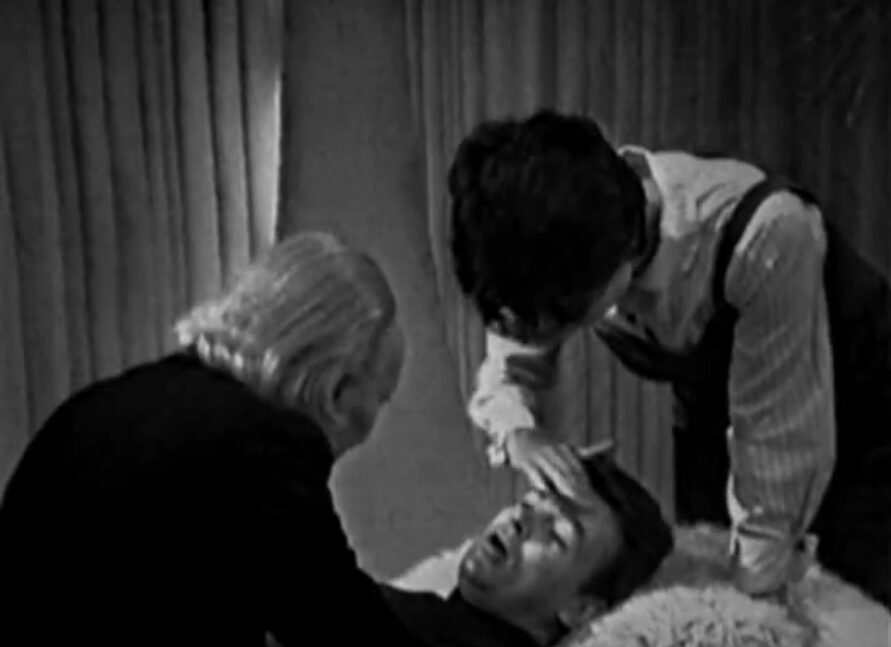
The Doctor concludes the water has been poisoned but tests show no sign of it. So he embarks on a classic epidemiological study of the local water pumps to find the source of the contagion. He does and confirms it is Atropine, for which there is a treatment. He also shows that the source of contamination changes sporadically. Which means the water is being manually poisoned at different locations.
Meanwhile, the City Administrator is convinced that Ian is pretending to be sick for some nefarious purpose, undermining public confidence in the water supply as part of a plan for invasion. He insists there is not – cannot be – anything wrong with the water and refuses to acknowledge all evidence or rational arguments otherwise. Instead he spins a borderline deranged conspiracy whereby the Doctor’s research and proposed cure are part of a plan to poison them all and subjugate the population.
This serial, as I said, resonates considerably in a Covid world.
These are absurd names they all have. None of them wear any signs of authority or badges of position. How are we to distinguish them?
The City Administrator, somehow mocking me from half a century ago
An off-the-cuff remark by Carol to the City Administrator that the Sensorites kind of all look the same without their identifying badges of office gives the spiralling official an idea. He kidnaps the Second Elder’s family group and steals his sash so he can put a stop to the Doctor’s evil plan to cure them all.
The fact that such an act was literally unthinkable only a day before shows the way in which the Administrator’s actions fundamentally undermine everything about his own society. He is willing to kidnap, threaten, steal and even overthrow their long-established social order for his crazed ideology. He is claiming to want to save the Sensorites but his own actions are not those of a Sensorite at all.
Also, now that Neck Cuff is secretly One Sash and One Sash joins engineer with no insignia, my brow furrows with the kind of concentration usually reserved for identical robed man in funny hats. I hate Sageuks.
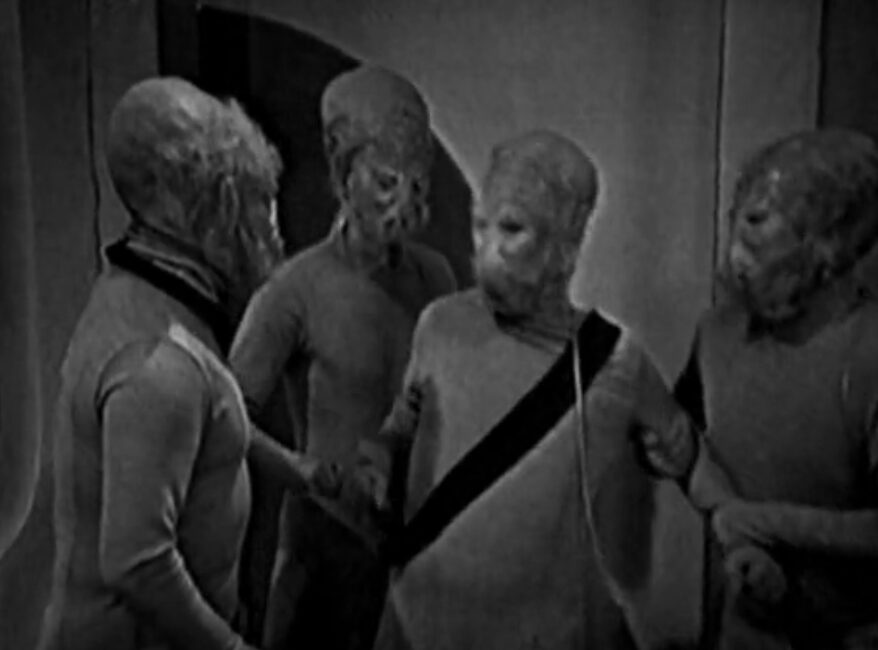
The Doctor heads down to the aqueduct for a bit of investigating, which troubles the Sensorites no end. The aqueduct is dark and noisy and there are monsters there – all things designed to keep Sensorites out. The First Elder explains that expeditions to the aqueduct often do not return and those that do come back have strange and terrifying stories. Susan takes Ian -still weak but having been given the antidote – to go after the Doctor and the First Elder muses that he has been very wrong about them.
The Doctor finds Atropa belladonna (Deadly nightshade) in the aqueduct tunnels but his gloating is cut short by growling. Susan and Ian find him unconscious with his jacket in shreds while something unseen bellows nearby. The Doctor believes the water and the so-called monster are connected but they’re realising they have a second enemy – one of the Sensorites is working against them. It’s something that a drooling John is still trying to warn them about but the Sensorite scientist can’t believe it. Sensorite society is perfect, all are contented and secret plots and treasonous schemes are impossible.
Which, again, makes you wonder why they have a Warrior caste and also why a deadly machine like the Disintegrator was ever invented. A casual remark later suggests they also have the death penalty. It’s hard to reconcile these things overall, especially when the species was introduced as peaceful and passive.
In another part of the city, the City Administrator has an altercation with the imprisoned Second Elder over the firing key. The Second Elder destroys the firing key but the Administrator accidentally kills him. He decides to frame the Doctor for murder, a plan that fails. But he takes the opportunity to pin his own crimes on the dead elder and ends up being given his position. He is now the Second Elder in reality.
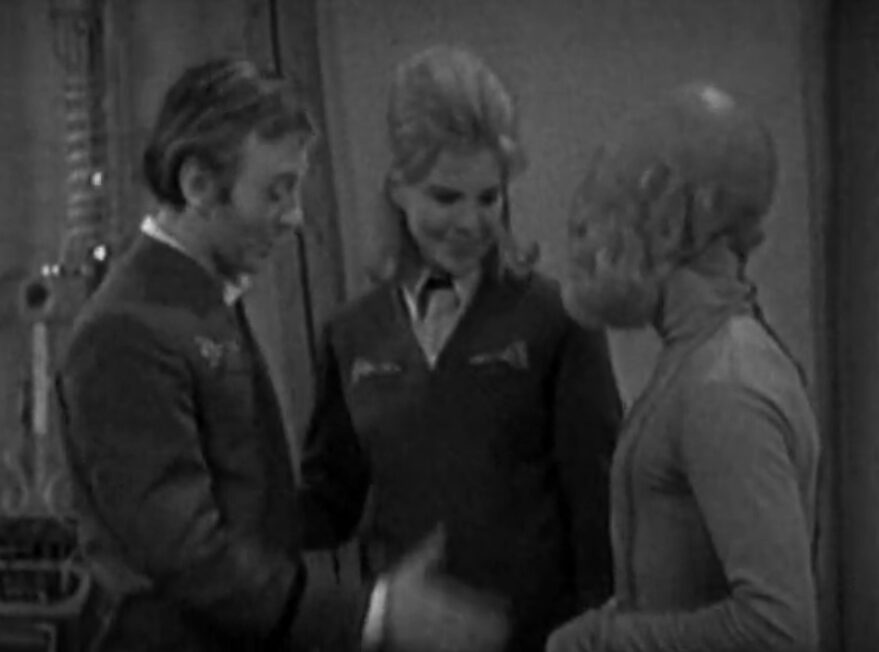
With the help of a cured John, the TARDIS crew belatedly realise that he is their enemy but, without proof, they know the First Elder won’t be able to believe what they say. For now they need to stop the aqueduct being poisoned. Ian and the Doctor head down there again, while Susan goes to get Barbara from the spaceship. Ian and the Doctor are given weapons, unaware the Second Elder has swapped them out for ones that won’t fire and meddled with their map so they will get lost.
The Second Elder kidnaps Carol and holds her hostage, forcing her to write a note that says she’s gone to the ship. But with Barbara and Susan back from their trip, they know this is a lie and use it to convince the First Elder of his new second-in-command’s scheming.
Barbara and Susan get a hold of an accurate map and Barbara heads down to the aqueduct to help her companions, while Susan stays behind to direct her using telepathy. She and the First Elder have a conversation about her home planet, in which her character gives a rare monologue about her as-yet unnamed homeworld.
It’s ages since we’ve seen our planet. It’s quite like Earth, but at night the sky is a burned orange, and the leaves on the trees are bright silver
Susan, The Sensorites
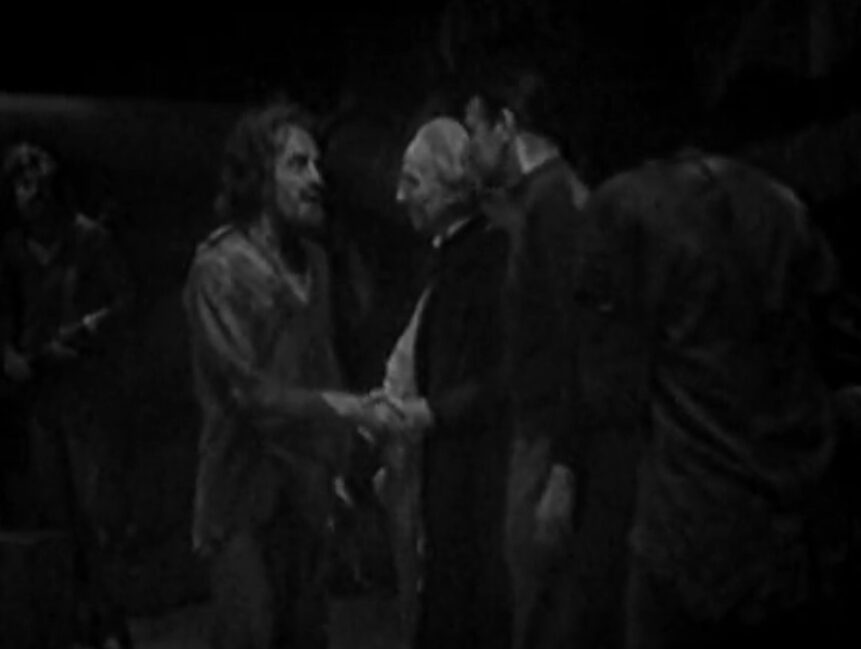
In the aqueduct, the Doctor and Ian discover that some of the humans who supposedly died in the shuttle explosion are still alive and responsible for the poisonings. And, as we soon see, quite quite mad. Like John, exposure to the Sensorites’ mental powers have effected their minds and they’ve spent possibly years in the tunnels convinced they’re fighting a war with a people who didn’t even know that they were there. They even blew up their own ship, believing their colleagues who were returning to Earth were in fact deserting.
They had conflated their own avarice for the mineral resources of the planet into a colonial war between their two peoples; poisoning the water in guerilla attacks. Literally driven mad by greed.
At this point, the main plotline ends rather abruptly in a way I found somewhat jarring and, with a significant chunk of the middle episodes being filler, this only adds to the serial’s pacing problems.
Nonetheless, faced with saboteurs who have murdered dozens of their people, the Sensorites refuse to succumb to violence in a move that shows their values will survive this contact with the outside world and the City Administrator’s plotting.
Having cured the plague and found the source of the contamination, the First Elder gives them back their TARDIS lock and sends them on their way. They farewell Maitland, Carol and John (offscreen) who are taking the three tunnel saboteurs back home for treatment.
Back in the TARDIS, Susan complains that without the magnifying power of the Sense-Sphere, she won’t be able to use her telepathy to the extent she could while on the planet. The Doctor promises they’ll explore her abilities as soon as they have a bit of time to do so. But that, of course, is predicated on them finally getting home.
The theme of adventure and wanderlust versus stability and belonging is an undercurrent of this episode, especially in Susan’s arc. While a Doylist interpretation is that they’re preparing for Carole Ann Ford’s planned departure from the show, the Watsonian one is that Susan is growing up and ready to start her own life away from her paternalistic grandfather and the constant travelling. It’s character growth that will feed into her eventual exit in the show’s second series.
The Sensorites is never going to be listed as one of the better Doctor Who serials of any era. But despite its flaws, it’s an underrated story about culture clashes, imperialism, and how societies ultimately benefit from expanding to include outsiders. And in a Covid-19 world, it’s a prescient portrayal of the corrosive and destructive power of populism and its embrace of conspiracy theories.
NOTE: The original version of this piece mistakenly referred to this serial as the final of the first season. This is not entirely true as it was followed up by the Spooner historical, The Reign of Terror. With two of its episodes lost, it was listed as a lost serial for a long time. However, it is the true final serial of Season 1 and is now available with animated reconstructions of the missing episodes.
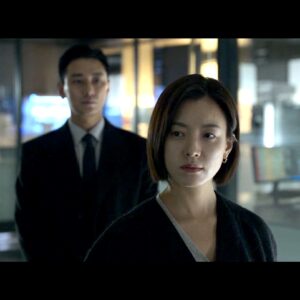
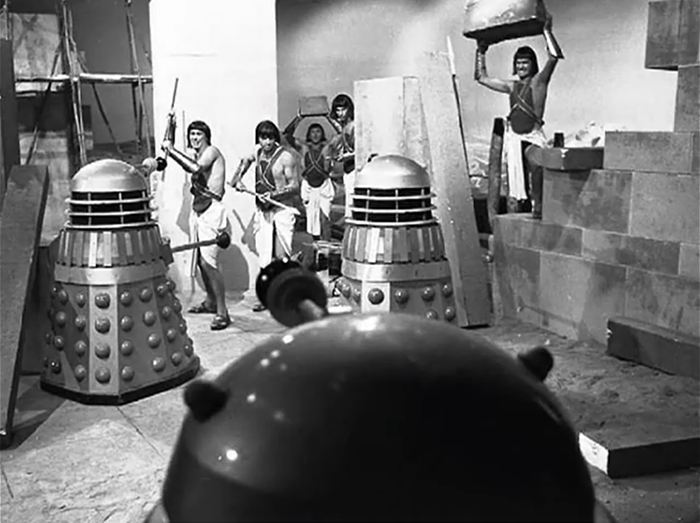
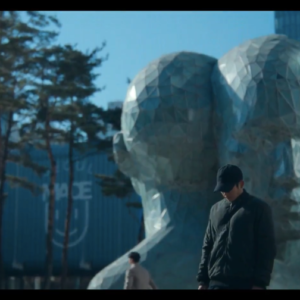

And dare I say, probably influenced Star Trek re similar topics. The sensorites to start with, remind me of other certain aliens (tongue firmly in my cheek) re the original Lost in Space where we see a number of aliens at different times peering in and lurking just out of sight and also using their telepathic abilities. These were the sorts of things that did scare me a tad as a five year old.
The most telling aspect in your fabulous recount of this story Lee, is what has really changed in the last 55 years?
As for Sageuks, there is a good one every now and then. I know one reviewer I follow who, as she says, cannot stand the scenes when the narrow minded men in their red cloaks open their mouths. If you ever have the time, take a look at The Red Sleeve Cuff, because so far, it has effectively deleved into great detail re the palace maids – far more than any other show, and perhaps more along the lines of what you might see in a good historical cdrama. So far we have had the chance to see such things as their actual role and responsibilities (not just following a king, queen, prince or princess around), their annual celebration day, tending to the silk worms, some great insights in the role of the queen in celebrations and so on.